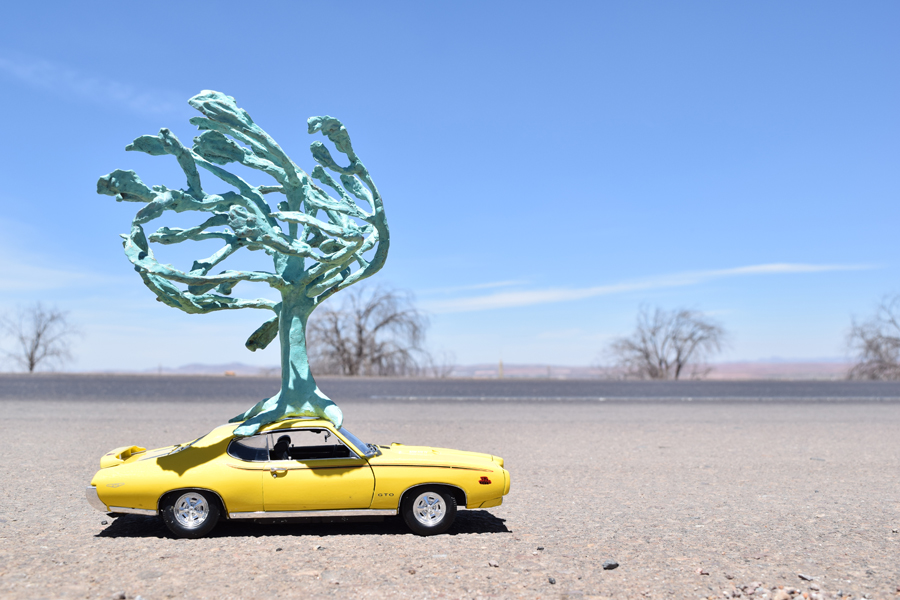ARBOREAL LOCO-MOTION
Arboreal locomotion is assigned to the locomotion of animals in trees. In each habitat in which trees are present, animals have evolved to circulate among them. Some animals can only climb trees from time to time, while other species are exclusively arboreal. These habitats pose numerous mechanical challenges for animals that move through them, leading to a variety of evolutionary anatomical, ecological and behavioral consequences.
And we humans have evolved to cohabit with trees? Between, houses, buildings, roads, cars?
If we take the words Arboreal locomotion literally, it will have a totally different meaning: loco (crazy in spanish) motion (movement) and arboreal (relative to trees); this is “CRAZY MOVEMENT OF THE TREES”. Thus, in this exhibition, the utopia of trees moving and the way they coexist and live among human beings is represented in a playful way. Along with the wonder of its existence and all the benefits that they offer (water, reduction of Co2 emissions caused by cars, shade, fruits, beauty, climate regulators, etc.) Using car models, glass marbles and trees.
With this purpose, it is intended to highlight the importance of trees today as means of creation and sustainability of biodiversity, assimilating them as tangible gods from which life arises and through their joint unattached and charitable collaboration they do good to the beings of their environment. An example of the above is the role of trees in reducing Co2 emissions and what cars represent. Another example is to represent the exchange, communication, connection and union between the trees, with the similarity that exists between the connection and exchange in our neurons of the brain, and thus represent the “psychic” action of the trees as a whole participating entity; to attract water, storms and regulate the climate to generate life. This seeks to encourage paper recycling, promote awareness of cutting down as few trees as possible, the importance of reforesting and sowing the Gods that give us life.
Written by: Inés Cusi and Gerardo Pérez-Verdía

